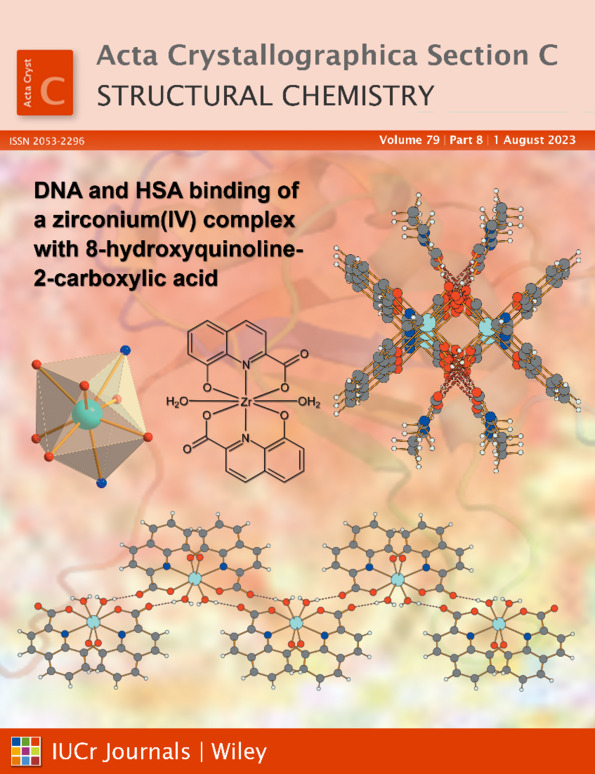Low-dimensional compounds containing bioactive ligands. XXII. First crystal structure, cytotoxic activity and DNA and HSA binding of a zirconium(IV) complex with 8-hydroxyquinoline-2-carboxylic acid
Abstract
A new zirconium(IV) complex, diaquabis(8-hydroxyquinoline-2-carboxylato-κ3N,O2,O8)zirconium(IV) dimethylformamide disolvate, [Zr(C10H5NO3)2(H2O)2]·2C3H7NO or [Zr(QCa)2(H2O)2]·2DMF (1) (HQCaH is 8-hydroxyquinoline-2-carboxylic acid and DMF is dimethylformamide), was prepared and characterized by elemental analysis, IR spectroscopy and single-crystal X-ray structure analysis. Complex 1 is a mononuclear complex in which the ZrIV atoms sit on the twofold axis and they are octacoordinated by two N and six O atoms of two tridentate anionic QCa2− ligands, and two aqua ligands. Outside the coordination sphere are two DMF molecules bound to the complex unit by hydrogen bonds. The structure and stability of complex 1 in dimethyl sulfoxide were verified by NMR spectroscopy. The cytotoxic properties of 1 and HQCaH were studied in vitro against eight cancer cell lines, and their selectivity was tested on the BJ-5ta noncancerous cell line. Both the complex and HQCaH exhibited low activity, with IC50 > 200 µM. DNA and human serum albumin (HSA) binding studies showed that 1 binds to calf thymus (CT) DNA via intercalation and is able to bind to the tryptophan binding site of HSA (Trp-214).




